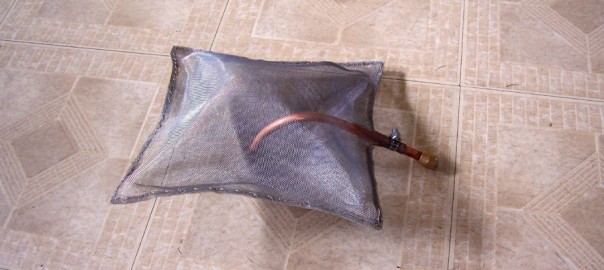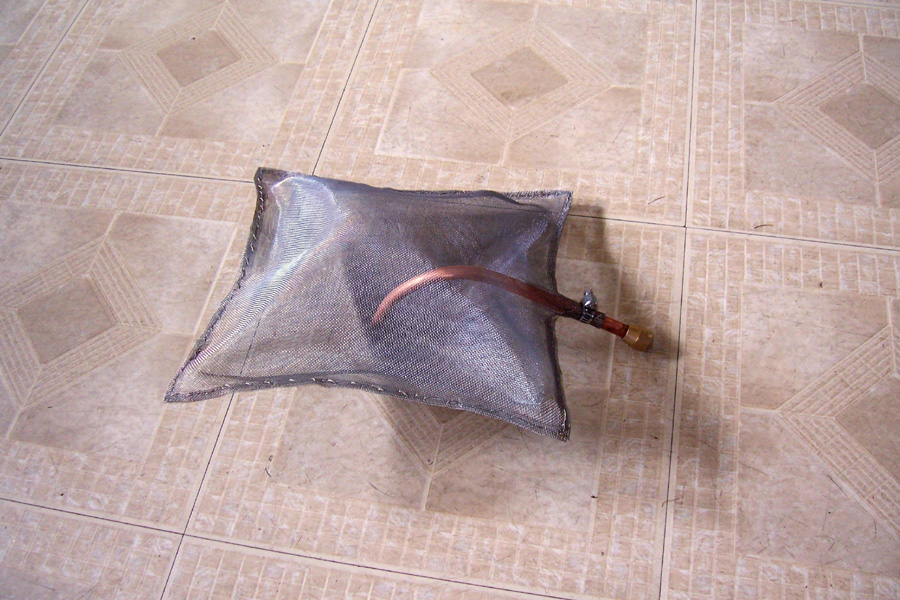Contributed by Wade Hicks.
Here is my homemade hop filter in action. In case someone wants to build their own hop filter, the parts list is as follows:
- 12″ x 24″ sheet of type 304 stainless steel cloth, 26 x 26 mesh. McMaster Carr part #85385T719
-
Type 302/304 stainless steel safety lock wire, 0.015″ diameter, 1/4# spool. McMaster Carr part #8860K11
-
3/8″ soft copper tubing, approx 8″ with 90 degree bend and flared on one end
-
1 brass 3/8″ flare nut
To construct the filter, I cut the stainless mesh into two equally sized 10″x10″ squares with a small rectangular protrusion in the middle of one of the sides to accommodate the copper pickup tube and a hose clamp to seal off the filter. I folded the edges of each sheet over about 1 cm so that when sewed it would prevent the edges from fraying. I laid the mesh sheets on top one another and sewed them together using the stainless lock wire. The copper tubing was inserted through the opening and secured in place using the hose clamp. This option also allows easy removal of the pickup tube and easy cleaning of the inside of the filter. Total price for the filter was ~$30 in materials.
Here are a few pictures of my hop filter before brewing:
My first test of the filter was a 5 gal batch with 4 oz of pellet hops in the boil. Here is a pic of the filter in the kettle after filtering the hop debris and hot break:
I took the hop filter out so people can see the amount of debris that was left in the kettle and how little wort was left behind:
Also, here is the filter outside of the kettle full of the hops. A little hop debris passed to the inside of the filter, but with whole leaf hops this is much less of an issue. I recently brewed a 10 gal batch using 3.5 oz of whole leaf hops. The filter also worked very well in this situation, although the whole leaf hops did soak up more wort volume.
Finally, here is the wort after being transferred through my homemade counter flow chiller and allowed to settle for about 20 min. All the stuff at the bottom is the cold break that formed during the extremely fast chilling method. I was able to chill the wort from boiling to 60F as fast as I could pump the wort through the chiller (~8 min) using approx 6.5 gal of tap water to chill the wort; very efficient!







